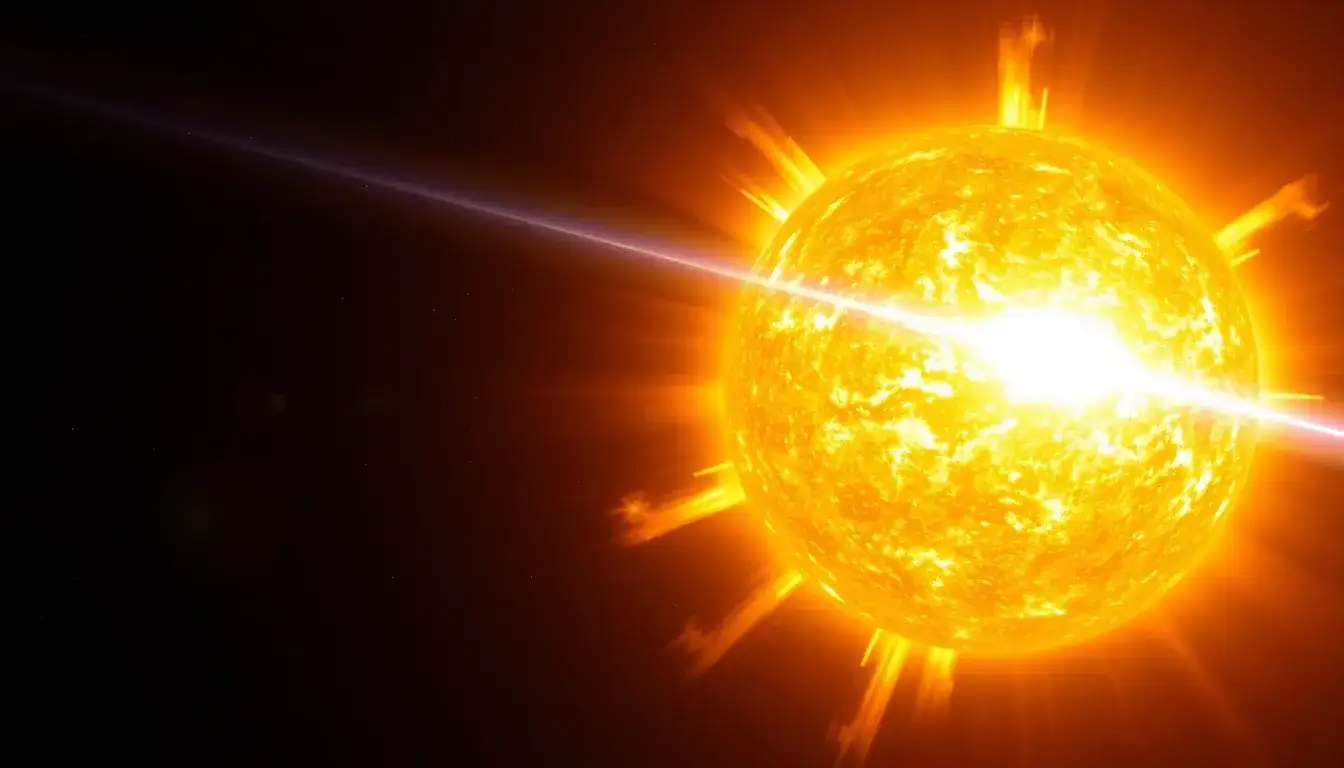
Sun news: POW! A powerful X flare explodes on the sun
Posted by: C. Alex Young, Raúl Cortés, and Armando Caussade
Date: February 24, 2025
Flare activity surged to high levels over the past 24 hours, following an X2.0 solar flare from sunspot region AR4001. This event triggered an R3 (minor) radio blackout that affected an area over the Pacific Ocean, west of South America.
Key Highlights from February 23-24, 2025
A significant explosion of energy occurred on the sun late yesterday, marked by an X2.0 flare originating from sunspot region AR4001, which has since rotated out of view. Although this flare was notably powerful, it was obscured from direct observation on Earth, meaning no immediate impact from a coronal mass ejection (CME) is expected. However, CMEs from earlier days may graze Earth today, leading to minor geomagnetic disturbances and the possibility of auroras.
Flare Activity Overview:
- The X2.0 flare erupted at 19:27 UTC on February 23, causing an R3 (minor) radio blackout.
- Four M-class flares were recorded: M1.6, M1.0, M1.1, and M3.3, originating from regions AR4001, AR3998, AR4001, and AR4000, respectively.
- In total, there were 13 flares in the past 24 hours: one X flare, four M flares, and eight C flares.
- There are currently nine active regions on the solar disk directed toward Earth, with AR3998 and AR4000 showing increased magnetic complexity, suggesting a heightened potential for flaring.
Future Expectations
Looking ahead, moderate flare activity is forecasted for the next 24 hours, with a 65% chance of M flares and a 15% chance of X flares. A potential CME impact is anticipated later today (February 24) from an eruption that occurred on February 19. Additionally, a weaker CME could slightly affect Earth on February 25.
Geomagnetic Activity:
– Geomagnetic conditions have been quiet to unsettled (Kp 1-3) over the past day, but unsettled-to-active conditions (Kp 3-4) are expected on February 24-25 due to the anticipated CME impacts combined with fast solar wind from a coronal hole.
Observations and Community Contributions
Jim Militello in Tucson, Arizona, captured a hydrogen-alpha image of the sun showing numerous sunspots, filaments, and prominences. Meanwhile, Patricio León in Santiago, Chile, noted the X2.0 flare’s emergence from a less impressive elongated sunspot that appeared just before it exited the solar disk.
Conclusion:
The sun remains dynamic, with fluctuating activity levels and the potential for intriguing solar phenomena in the coming days. Stay tuned for further updates as we continue to monitor solar activity.
Original article by NenPower, If reposted, please credit the source: https://nenpower.com/blog/powerful-x2-0-solar-flare-erupts-causing-minor-radio-blackout/


